Mobile ads drive grocery sales
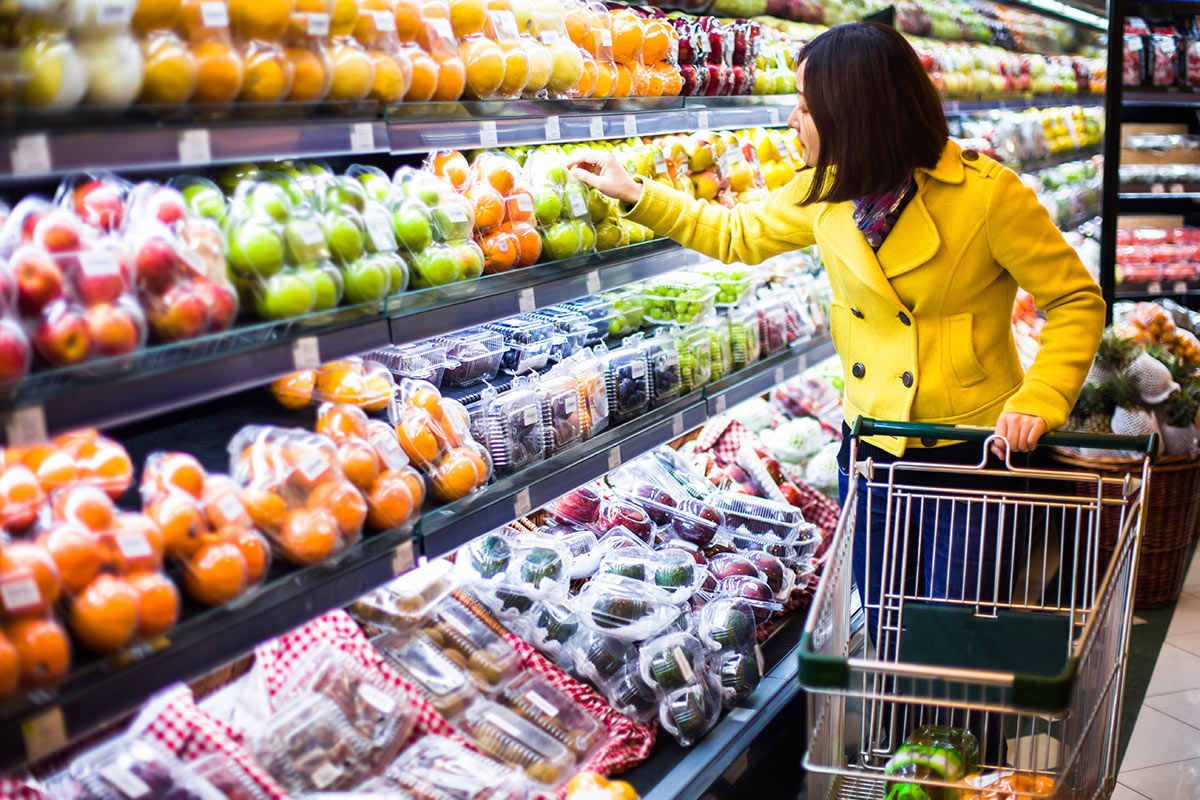
Mobile ads drive grocery sales
A new Schibsted study shows that mobile advertising drives people to stores and increase sales. Until now many retailers have been doubtful about the effect, given its short exposure time and the huge advertising clutter that exists today.
Eight out of ten Swedes use internet on their mobile phone daily and mobile is the medium with the largest reach (even greater than tv, radio and out of home advertising). Despite this the advertising effect has been particularly unclear for the retail industry which main focus is offline; to get more customers to the store and increase sales.
In the study Schibsted added mobile advertising to six Ica Maxi stores’ existing advertising (consisting mainly of direct mail, social media and local press).
The result was clear: there was an increase of 1 percent additional visitors to the stores, 15 percent more goods sold and 14 percent increased sales of the product that was displayed first in the mobile ad.
”We also believe in an even greater effect when the store itself selects the products that works best in the local area and when consumers become used to finding this type of advertising online”, says Linnéa Bergman, Insight specialist and project manager for the study.
With stores that are more easily accessible to consumers than Ica Maxi, the traffic increase is likely even higher than this study shows.
Stronger effect among younger people
The study also showed that with mobile advertising you reach mainly people younger than 49 years old. They are the ones who have primarily seen the mobile ad (both among those who have been exposed to the digital campaign and among the people interviewed in-store). This means that the effect of advertising is strongest in this group both in terms of the attitude towards the Ica Maxi brand (+ 18 percent in consideration and preference as well as + 30 percent in buying intention) and attitude towards this type of advertising.
And the effect is even stronger when it comes to people younger than 30, they are hard to reach via direct mail, since they’re not using that channel as much as the older age groups. In the study we also asked store visitors how they would like to have access to Ica’s offerings in the future. This confirmed that people younger than 49 years old mainly want access to offers through the digital mobile ad, while those older than 49 years old still want it by direct mail.
These results show how important it is for retailers to start digitizing their offerings to the younger target groups, but at the same time maintain the traditional medium to the older costumers – until they have become more digital.
Schibsted Retail Study is done in collaboration with Retail Academics. The study is made in a Latin Square Design, a model that allows us to isolate the effect of mobile advertising and thus reduce the noise that is otherwise great in a retail environment.

Annie Lidesjö
Director Global Insight, Schibsted Marketing Services
Years in Schibsted
9
My dream job as a child
Designer
Business trends in short
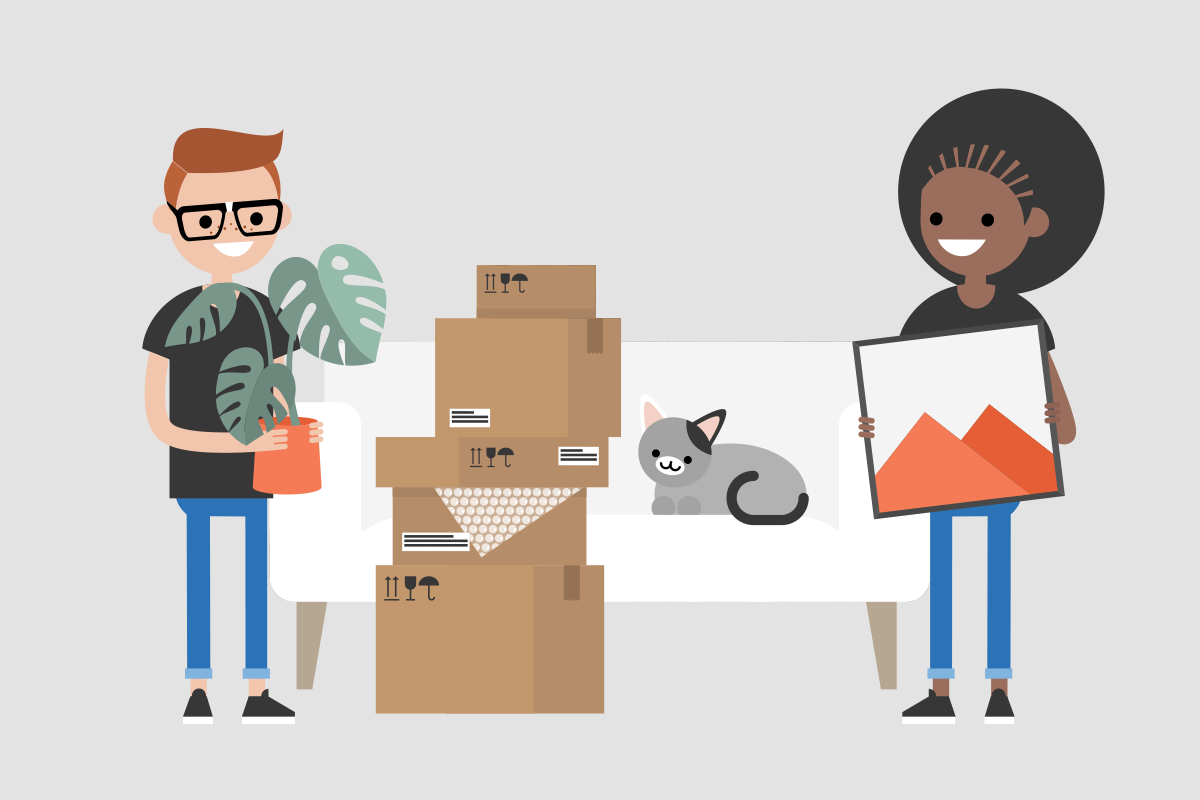
Business trends in short
Lots of things are going on in the marketplace area. Here are some trends summarized by Schibsted Daily Editor Ellen Montén.
Gen Z goes offline to shop
While Millennials are embracing mobile shopping, Gen Z is searching for ways to disconnect from their phones. The younger, digital-native generation has a more complicated relationship with digital services and is more concerned with the impact they have on their mental health. For these young shoppers, visiting physical stores can be a nice way to disconnect from the stresses of social networks and digital channels. This means e-commerce services need to find a way to make online shopping less stressful for their younger customers.
Amazon is a marketplace
2019 was the year Amazon went from being a retailer to being a marketplace. For the first time, the company reported that a majority of its revenue (58 percent!) came from its third-party marketplace, not from its online retail business. The marketplace has helped the company to grow fast, but handling millions of third-party sellers is not easy. There’s a growing black market that offers Amazon marketplace sellers ways to cheat the platform and mislead customers. Some of the cheats include bribing
Amazon employees to gain information or avoid disciplinary actions, while others focus more on removing negative reviews, set record increase in sales volumes, or paying as much as USD 10,000 a month for the top spot in the marketplace’s product search results.
At the same time, a US Court of Appeal has ruled that Amazon can be held accountable for products sold by third-party sellers on its marketplace. According to the ruling judge, Amazon may be liable since its business model “enables third-party vendors to conceal themselves from the customer, leaving customers injured by defective products with no direct recourse to the third-party vendor.”
Ironically enough, US regulators are also investigating whether Amazon is using its market position to hurt its third-party sellers by, for example,
Next up: Resale-asa-service
Resale-as-a-service (Raas) is a new key business area for the fast-growing resale startup Thredup. The company’s Raasplatform offers retailers secondhand shopping, features like resale popup stores and store credits for retail shoppers who sell their secondhand goods. For example, Thredup will help Macy’s to set up pop-up secondhand shops in selected stores. Thredup already receives over 100,000 secondhand items every day, and now it is building a distribution center that can process up to 50 million unique items each year to handle the new inventory from its Raas partners.
Poio makes learning into a game

Poio makes learning into a game
Daniel Senn is the dad, the educationalist and technologist behind Poio, the reading game that is helping thousands of Norwegian and Swedish kids to crack the reading code while playing.
The company launched its first reading game in Norway in 2017, then in Sweden 2018. But the story of Poio takes us all the way back to 2012, the year when Daniel had a son with impaired hearing. This story is about a father who decided to turn a challenge around and make it a solution for tens of thousands of people. Impaired hearing is one of many reasons why children experience difficulties in school. Learning to read is one of the first tasks confronting a pupil. It becomes the foundation for most of the learning that awaits them, and demands a lot of repetitive training. As Daniel talked with scholars and people with similar experience, they confirmed what he had suspected: that learning to read can be exhausting to a child. That struggling with learning can, over time, create negative learning spirals leading to serious consequences.
“I decided that my son was not going to have to go through that. There had to be a way to do something about the learning methods! To create a positive form of learning. On Leon’s terms. So we could avoid him reaching a point where he associated learning and reading with something negative”, says Daniel Senn. After a lot of searching with no results Daniel decided to try to solve the problem himself by working with things that Leon liked. It was going to evolve into an entertaining digital game full of funny characters and exciting missions. But the first prototypes of Poio were made with cardboard, paper and scissors at home on the kitchen table. “In the beginning I played with characters, letters and words together with Leon and his older brother Aksel to see what caught their attention, just with simple methods. One cardboard game that I made together with them turned out an instant success. It was one where the children had to figure out which objects/words the Vowel Monster could “eat”. They wanted to play it again and again. It was fascinating to watch how eager they were to master the game and learn new letters and words”.
The road from cardboard figures at home to a digital game started for real in 2015. With the cardboard game as a starting point, a long journey towards developing a more advanced digital prototype began. Daniel had worked on many digital learning games but could not find the equivalent tool for reading training. This led to the family making a choice: Daniel was going to quit his job and together they would put their efforts into making a universal reading game of high educational standard. “I felt an incredible drive to combine all the things I had learnt about game development, teaching methods, communication and aesthetics in order to create something meaningful. Something that could help children in a crucial phase of their development. Not only for my own son but for all children and families who meet challenges with reading training, regardless of age and preconditions.
“We hear that Poio is part of the reason that they are now reading their first book.”
It felt a little shaky to move from a safe and good job into the unknown. But it was a choice we made together, as a family – a choice we have never regretted.” In this project, an essential role has been played by Daniel’s co-founder and game developer Johannes Stensen. “A critical component for the success has been that the two of us have had the skills to develop the reading game on our own with a high degree of confidence in each other, a childish urge to experiment and a willingness to change the concept as we went along and learnt new things. At the same time, we have had a large network of people – including children – who have wanted to help us free of charge.” In order to learn more about how to evoke positive motivation in children, the two have been working closely with educationalists, teachers, professors and other parents. This has helped to ensure good quality content and find methods that could be combined with elements in the game.
“If they have fun, they will learn”
“Poio is a result of assistance from a large number of knowledgeable people who have contributed with their special competence, experiences and good questions throughout the whole development. Furthermore, they have given us the necessary confidence to challenge established truths about the best way for children to learn to read and confirmed what our guts were telling us: that curiosity, excitement and making reading joyful, are the keys to success”. They have also met several people who have had doubts about using digital games for educational purposes, particularly since Poio has many similarities with commercial entertainment games, where there are few specific instructions and the children have to figure most things out by themselves.
“This is one of the main points. For children to spend time on playing Poio it has to be built like that, on children’s own terms and as a real competitor to what the children are already spending a lot of time on. The children themselves must become fascinated by the challenges and feel that they want to learn more, both about the game and about our written language. And on top of that; if the children are having fun they will learn much more”.
At last, in the summer of 2017, they could share the reading game Poio with every family in Norway. The launch exceeded all expectations. “The road from our own small family project to a full national launch has been quite incredible. And the need for new tools for learning is clearly big”. They receive feedback every day from parents telling them how their children have been struggling trying to crack the reading code. ”We hear that Poio is part of the reason that they are now reading their first book. That is a fantastic feeling. Our goal is that no child should struggle with cracking the reading code. Some people might find that an unrealistic goal, but I just don’t listen to them”, Daniel says.
Poio has become a huge success already during its first year and families all over the country have confirmed what Daniel hoped for. The game engages the children and makes them eager to read, regardless of background. A year later the game now is also available to families in Sweden. Next year, Poio will be moving on to other places in the world.
Leon just started school
And for those of you who wonder how Leon is doing: he just started school this fall. Now Daniel will find out how the family’s joint project has affected Leon’s reading development. “Leon’s language is now developing in a way that is perfectly normal for his age. And he is very close to cracking the reading code. We are looking forward to his first year at school and we are absolutely confident about his future development, because he thinks learning is fun. Just like it should be for every child”, Daniel says. And what does Leon like most about the game? ”I like that the characters are so different and to steal the letters and get away with it”, he explains. He is also super proud for giving voice to Otto – the pink rabbit with a beard and large fangs.
Subscribers support a free press
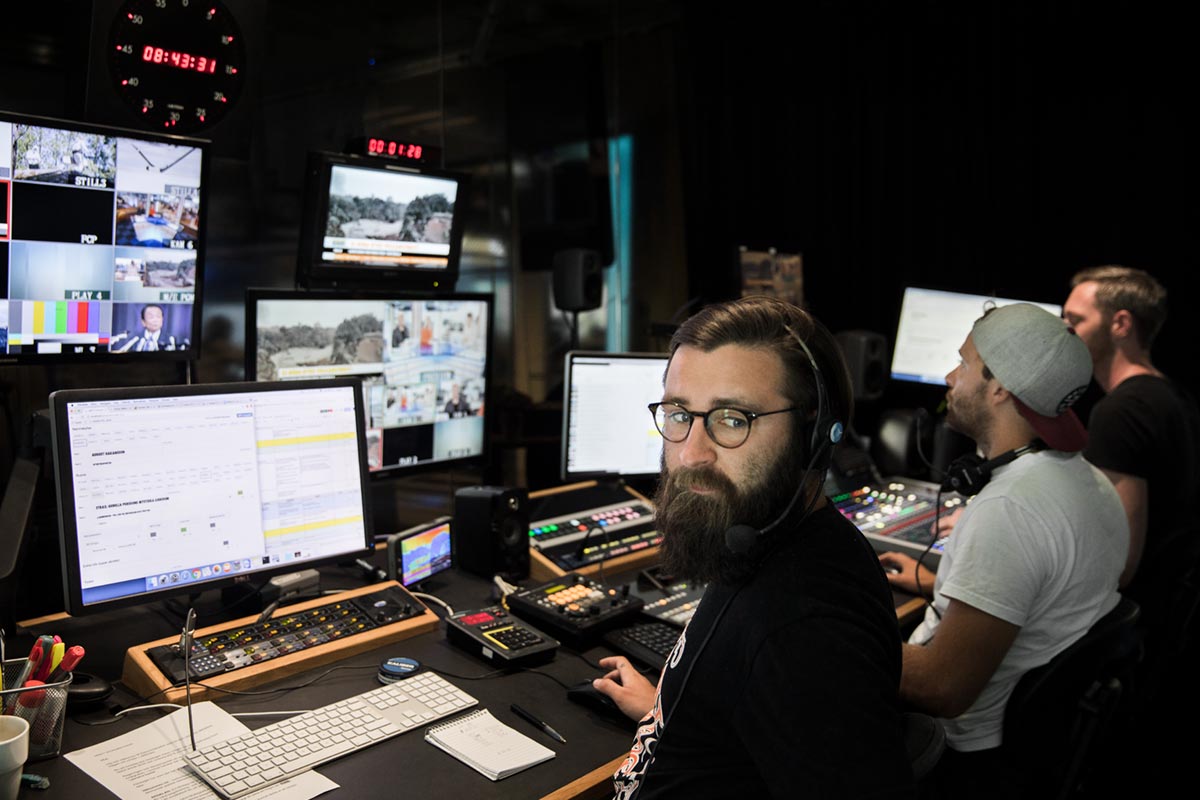
Subscribers support a free press
Netflix and Spotify proved that you could get paid for online content. Other businesses are following – not least the media. In Schibsted over 1,100,000 people subscribe to one of our newspapers – 65 percent are digital only. Having subscribers, in addition to advertisers, pay for your work means you can focus more on in-depth pieces instead of writing articles mainly to generate page views. It also makes the business model more robust.
Secure independence
But acquiring digital subscribers is expensive, especially when many people still attribute greater value to the print product. And within a few years there will likely be a natural market cap in volume and in revenues. To secure media independence in a climate that is indifferent to or hostile towards mainstream news is another crucial challenge when, at the same time, there’s a major technological disruption to the income streams. To succeed in this, we believe in having a consolidated consumer business unit that is closely aligned with product and editorial.
We have to clarify our brands
We’ve identified five areas that we will focus our attention on: Our news brands are our greatest assets. They have been built by providing decades of high quality reporting that people trust. But in a world where we’re addressing consumers, we have to clarify our brands, to help people choose us. Bundling is an avenue worth pursuing. Business financial news from all our brands might for example be an enticing prospect. Creating a portfolio that allows for rich bundling and flexible payments is crucial. Many people value discoverability and curation above all else. We need to create the kind of premium subscriber experience that evokes real desirability.
Much work is to be done
The more data driven we become, the better we optimize the consumer business. We still have huge potential in automating our prospecting, sales and anti-churn efforts. There is also a lot of value to be created outside our editorial products. This is done by many today by offering loyalty programs. We believe we can scale and professionalize a lot of these offerings. Much work is yet to be done, but we’re going into this uncertain future with our eyes open. We believe we are on the right path to finding new models that our businesses can rely on, in order to safeguard the future of a trustworthy, free and independent press.
Tor Jacobsen
Sidney Glastad
How to get paid

How to get paid
What kind of journalism are the readers willing to pay for? At Svenska Dagbladet, this question has led to new priorities and ways of working. The answer has made it clear what news media should concentrate on: meeting readers’ demands and devoting ourselves to journalism.
Do you think that one cannot predict news journalism? Well, in September, 18 years will have passed since the terrorist attacks in the US, and just like before the media in Sweden, as well as in the rest of the world, will produce articles about 9/11. In a generally unpredictable news flow, editors are grateful to be able to plan something that won’t change, regardless of what else happens. But new possibilities of data analyses are merciless towards old editorial habits. So far, I have not seen one single piece, where the anniversary has been the gist of the story, that has actually been read by any significant number of people.
The same thing goes for what we in the newsroom call “Wikipedia pieces” i.e. articles that too closely resemble encyclopedia entries or something that government authorities might post on their websites. Under the category “Why not?” we count articles that often are a combination of a not very thought-through idea and a stressed subeditor. The result is lukewarm content lacking relevance for a majority of readers.
What would readers pay for?
All three of these categories have now been banned in the SvD newsroom. They may seem harmless but they occupy way too much resources and are literally in the way of the kind of journalistic work that engages readers. A bit more than three years ago we started the project SvD Premium – content only for subscribers. At the time we did not ask ourselves which parts of all our journalism that we were going to lock in. Instead we started at the other end: what content could be so relevant that the readers would be willing to pay for it? Judging from thousands of converting articles in different formats and in different topic areas, we could soon see a pattern. The common denominator was not topics but needs. A model with four fields took shape:
1: Content that is helping the reader understand the news flow
For media houses in the news category, this is fundamental. Without an astute journalism that is investigating, digging, guiding and analyzing the news flow, the whole model will collapse. This is a field that delivers a great number of articles and has many readers. The rate of conversion is rather low, as other media can present similar content, but the volume leads to a high share of new subscribers.
2: Content that is close to the readers in their daily life
This can best be described as journalism that the readers “need to know” and is useful in their day-to-day life. For example, it can be advice concerning people’s private finances and property deals or new findings in psychology, food or health. This field has many readers and a high rate of conversion.
3: Content that is helping the readers understand the world we live in
This is about our own takes, describing something about the wider world around us – where the society or parts of the population are going. For example, at SvD we have had a great success with in-depth reports on how Sweden would look in the year 2025 if the right-wing Sweden Democrats, or other political parties, were to decide. It could also be reports from worlds that most readers cannot reach, such as a piece from inside Mensa, the association that gathers people with a high IQ. The number of readers is often lower than in the other two fields, but the rate of conversion, among those who take an interest, is high because the material cannot be found elsewhere.
4: Content close to readers’ interests and identities
“Nice-to-know journalism”. It could be tips about films or books, restaurant reviews, language or history. Normally, this field does not convert very much, but it has a high proportion of logged-in reading and is therefore fundamental for preventing churn. Whenever we have good numbers – for both conversions and engagement – they often coincide with having filled all four fields with sharp and clear journalism in our core topics.
The insights we have gained along the way have, among other things, led to new jobs in the newsroom; editors responsible for different fields in the model, working across boundaries with every other department and in close cooperation with the data and analysis team. Furthermore, we have presented content we haven’t had before, signed on several external people and begun cooperating with other media, such as the American magazine The Atlantic, from which we publish, every month, a carefully selected in-depth story. The efforts have paid off. In the last three years, the number of new subscribers has become almost five times higher, the logged-in reading has gone up as has the conversion rate. As for our prioritized weekend in-depth pieces we have eliminated almost all of the articles that were being read by few and more than doubled the feature stories that engage a large number of subscribers. Both extremes are important to follow up – the editorship of the future is as much a question of editing out as it is of prioritizing.
Readers want to pay for quality
In the present transformation of the media business, the possibilities for working in a data informed way are a good help. The fact that the power now so manifestly has shifted to our actual employers, the readers, may make some people feel uncomfortable: where will it end if we give the readers what they want? Isn’t there a risk that we abandon the role of editors and become populistic? For my part, I am hopeful. We see how readers want to pay for quality. The technology and the way we report may change a lot in the time to come. As long as we focus on what makes us unique in the enormous flow of information, proper journalistic endeavor, the demand for what we do will prevail.
Brands are built to influence
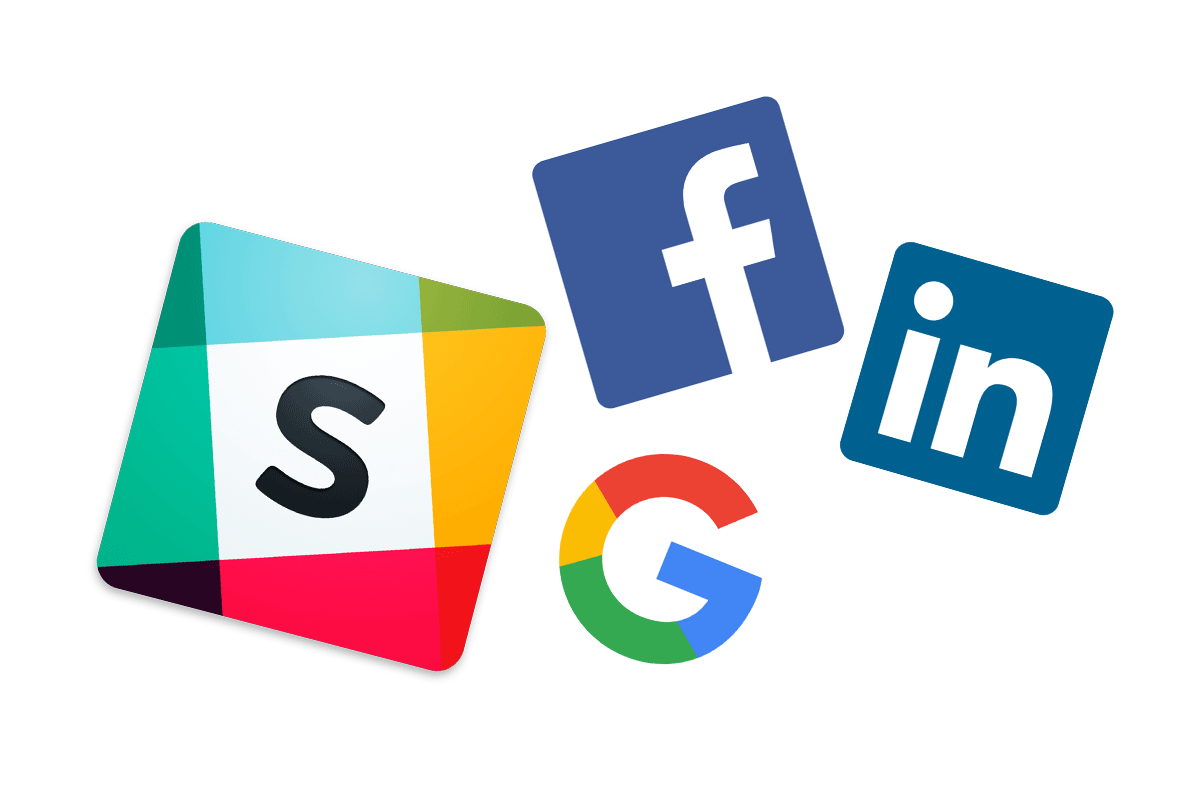
Brands are built to influence
The role of brands has fundamentally changed in the digital era. It’s not all about getting attention anymore, but about influencing peoples’ behavior. But to succeed in this takes trust – something many big brands of today are struggling with.
Who influences you the most? Family you might say, then friends, or colleagues? Probably also people who represent political, religious or other values that are important to you. People you admire? Would you have mentioned companies and the brands that represent them? If not, let me state my case for why you should have. Chances are that from the moment you wake up and reach for your phone until the last episode you stream before bed, businesses influence more choices in your daily life than any living, breathing person. Many of the everyday decisions you make have been effectively outsourced. A frightening thought?
For example, your social media curate your feed and thereby influence what you experience of the world. Your media outlets choose the news they deem most important based on your editorial profile. Services you use throughout the day – whether Slack or Starbucks – nudge, suggest and direct your actions and attitudes. Linkedin and Tinder even influence who you build new relationships with. Your life is shaped by the habits they induce, and the recommendations and the choices they make on your behalf. Consider the influence of tech companies that have fundamentally changed the way we live, work and play. It’s difficult now to even imagine a world without brands like Microsoft, Apple, Google, Amazon, Airbnb, Uber, Netflix, PayPal or eBay. They simply make everything so convenient. These brands not only influence us as customers and users, they introduce and disrupt entire categories.
New categories emerge and for each new category the brands’ main task is to influence our behavior towards adopting the behavior of the category, rather than seeking to influence preferences between brands in the category. When Alipay gets a staggering number of people to invest small amounts of their savings, you get the phenomenon Yu’e Bao, the world’s largest money-market fund that has traditional bank heads spinning. When Spotify gets people to subscribe to all music month by month rather than buy one record for forever the whole music industry is shaken to its core. Behind these successes is the fact that the brands know a lot about us and are willing and able to use that knowledge to create “sticky services”. Sometimes it’s a great idea realized. Other times it’s the business model itself that’s sticky. Most digital businesses have elements of both. You need a business model to realize a great idea, and a great business model will not fly without an idea for people to engage with. All of this has changed the way we now define brands.
Names with the power to influence
In the beginning a brand identified the maker of the pot, the wine or the plough – it was personal. With the industrial age and its faceless factories, the brand replaced the personal connection between maker and user, becoming a substitute identity carrying the promises of products and services. As the number of competitors grew, brands evolved personalities, values and lifestyles to target specific segments, and as a consequence brands became cultural identifiers. The most commonly cited definition of brands in this sense comes from Keller and talks about brands as “a set of mental associations”.
Today a brand is tasked with influencing behaviors in a more fundamental way. Just as brands have extended beyond the sphere of consumer products to include movements, institutions, people and places, a brand’s power to influence must go beyond establishing preference between a finite number of competing products in an existing category. A set of mental associations is simply no longer sufficient. The French brand expert Jean Noel Kapferer has suggested “a name with the power to influence” as the new definition of brand. A brand’s influence can be exerted in subtle ways and may be integrated into the product or service rather than communicated through the traditional means of brand building such as advertising. I’m willing to bet you can’t name the marketing campaign that made you download Instagram or start using Google maps.
Brands and products blur
Since the 50s brands have played out their personality and promoted themselves through the ad, the 30-second spot, sponsorships and similar. This kind of thinking is still very much alive and lately perpetuated by the micro targeting that follows your every click. The exposure traditionally had one goal; create awareness, interest, desire and action (AIDA) for the advertised brand. The customers would – based on their experience, the reputation of the brand, the social status the brand provided, etcetera – decide whether to become loyal or choose a different toothpaste, car or insurance company next time. The product or service brands carried most of the relationship, the companies behind them were less visible (and if they were visible it was mainly to stakeholders like the finance community, governments or their industry).
Today the distinction between the product brands and the companies behind them is becoming much blurrier. New categories often emerge through stories of bold missions undertaken by the founders, and users not only let these brands into their lives, they also act as brand ambassadors and sales reps through recruitment of friends, family and colleagues. Now that we are becoming aware of how intimately these companies know us and how we spend our time, it is no wonder people expect (want and hope for) the “parent” company to be a force for good and not evil.
Close and personal
It is interesting to see how the global megabrands are struggling to address this gap between how effectively they are able to influence us at an individual or product level and how ineffective they have been in exerting that influence as a company when trying to effect, for example, policy changes at the EU level. So far, people either cannot or will not live without the services they have come to depend on, even if they are uncomfortable that the companies behind them are not paying taxes, eradicating local businesses, not having a satisfactory stand with regard to privacy issues and perhaps even criminal business practices and so on. What was once a corporate reputation issue far removed from the everyday branding and sales efforts, has become much more close and personal today as people are starting to grapple with the effects of these issues. This means that brands that seek to establish, maintain and own a lasting relationship of trust with consumers and other important target groups like partners, investors and talent – in order to influence their behaviors – need to bridge this gap somehow.
Visible mother brands
However, people seem to be seeking ways to re-establish the kind of relationships we had to the original maker’s marks, like in the times before mass production. One trend you may have noticed that could indicate that we are indeed craving such a responsible entity is the emergence of visible mother brands such as LVMH or Unilever. These are brands that represent some uncompromising values, purpose or meaningful narrative that permeate all their product or service brands. Over time, people are given an opportunity to get to know, trust and have a sense of loyalty towards the mother brand. The mother brand invests carefully in this relationship, including shared datasets and services, as it introduces and retires brands to and from the family in accordance with that overarching understanding between the brand and people. Take Axe as a case in point. From being the deodorant that magically made ordinary guys irresistible to women, the brand now encourages men to celebrate their individuality, the same way Dove does for girls. Without Unilever’s “sustainable living brands” philosophy the gap between the old and the new Axe could have been too wide for customers to leap across.
A stronghold on behavior
While there is no doubt that the digital megabrands have a stronghold on user behavior, their power to influence authorities and the public at large has shown itself to be limited when it comes to defending their interests. GDPR will make the exchange of data in exchange for convenience much more visible. Public discussions and transparency activists might speed up policy making that shifts the power balance between people and companies back in favor of people.
Since the core role of brands has changed from grabbing attention to influencing behavior, understanding the relationship between people and brands is more crucial than ever. If brands are names with the power to influence, it is time for businesses to stop seeing their brands as marketing vehicles and start using them to create great companies, great products and great societies – all at the same time.
Marketplaces are here to serve you
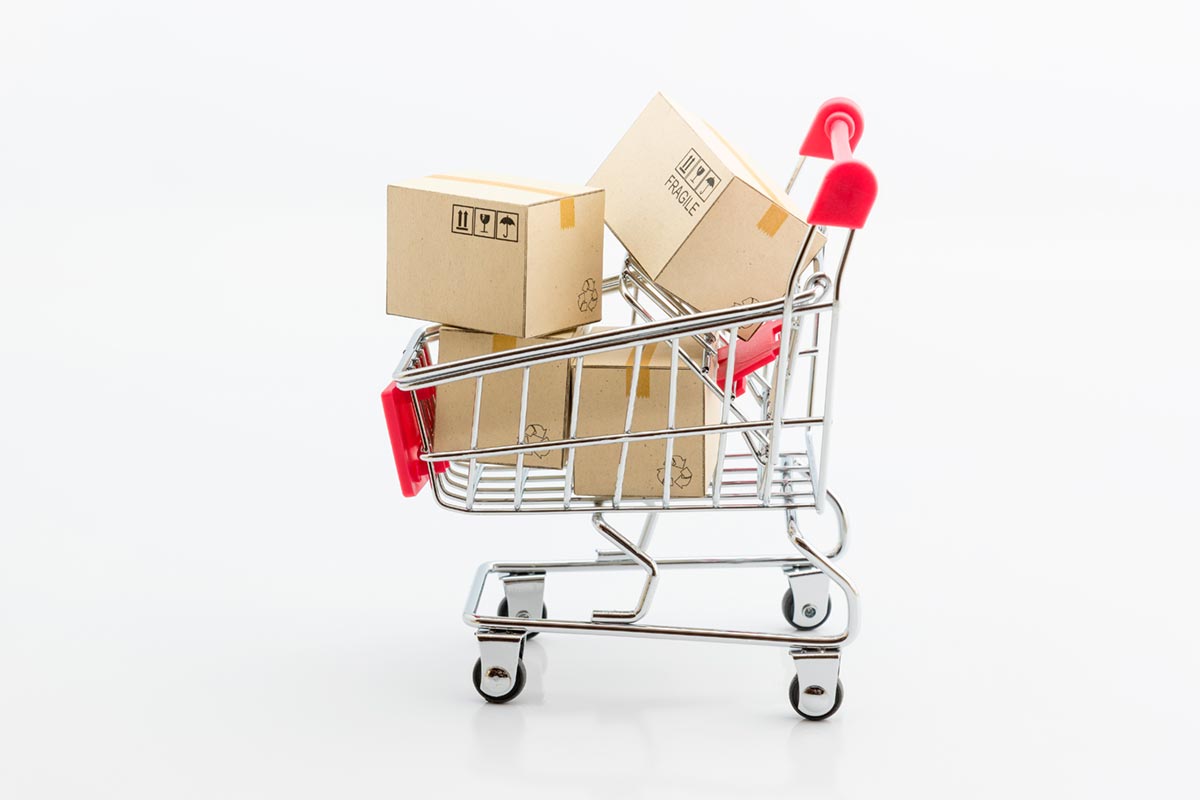
Marketplaces are here to serve you
Changes in consumer behavior are driving the change in marketplaces. New players will solve narrower user needs, but far more conveniently and smoothly than before. All based on machine learning and data.
Rapid growth in new marketplace models such as Farfetch, Rebagg, Glovo, and Frontier Car Group are great examples of this quick change. These models demonstrate how convenience and flexibility are shaping our attitudes towards spending and how easy it is to switch to a new player in today’s competitive landscape. New marketplaces are moving away from owning unique supplies of goods and content. Instead, by using machine learning and data, they can easily find what we need in a specific niche, where it is available for immediate shipping. This will happen whether we’re looking for a car, for real estate, jobs, home appliances, education or any other segment. This is why there is a verticalization of marketplaces. High relevance is the new black in the market. Medwing is a great example of this in the health area, as is Zenjob for job search, helping students get jobs.
Immersive marketplaces
Usually this kind of approach means higher risk, since it involves handling transactions and logistics, getting temporary workers on the payroll, financing the deal, providing warehousing and relocation services. But the aim is to remove unnecessary friction and barriers to make good deals happen. These new marketplaces do not only sell leads and visibility anymore, they help users to transact and fulfill their needs end-to-end. As an example, a student using the Zenjob app can work whenever it’s convenient between exams, classes and on holidays without the hassle of applying for a job at Zara or H&M. These new models are still at an emerging stage but major VC funds and investors are betting billions to make them dominant in major markets in Europe.
We used to think that you need to build a strong brand to become a destination for certain needs. This still applies, but there is no room for many apps in people’s phone habits anymore. Therefore, we can also see new immersive marketplace models popping up inside mobile apps where we engage on a daily basis. Tomorrow’s winners use machine learning to identify and match patterns in our behavior, learn our purchase intents from P2P communication and integrate themselves seamlessly into communications platforms we engage with every day. We have already seen social network based marketplaces, such as Threads, without a destination site, just living in Messenger apps, and popping up at a relevant moment. I bet these models will appear in social channels like Slack in the coming quarters.
A new era for cars
Car manufacturers are already testing out sharing services based on flexible subscriptions to access a car you need, making it clear that the era of electrical cars will be quite different from the combustion engine cars we know today. There are also new kinds of aggregation services launched for micro-mobility, using bicycles and e-scooters. Behind this is the fact that more than half of our car rides tend to be less than five kilometres. The era of new network based transportation marketplaces has started giving us easy ways to access a vehicle. Mobility companies like Tier, Bipi, Drover and Cluno are great examples in Europe, similar to their US based peers like Uber, Lime and Fair.
The tech needs to mature
The boom of blockchain and cryptocurrencies motivated many teams to discuss how the trust in marketplaces could be solved in a new way. Companies like Listia, Openbazaar and Origami Network have been leading the way and protocols such as INK have collected capital to develop the technology. However, as always the new technology needs to mature and become more scalable to win over older models. But in three to five years time, the development around blockchain will probably pass the threshold of convenience, speed and scalability, making it a viable technology for decentralized marketplaces for mass markets. The underlying blockchain based models will help build highly scalable marketplaces and solve how we transact across different transaction cultures, taxation models and payment structures. It is yet to be seen which protocol will win, but it is evident that the benefits of a fully transparent and trackable marketplace are there.
The lonely team

The lonely team
He had never skied before and his startup was still very young. Still, in May 2018, Thomas Tirtiaux decided to ski across Greenland with four other French entrepreneurs and a guide.
On May 1, 2018 we boarded a bus in Kangerlussuak that dropped us at the foot of the glacier on the west coast of Greenland, at the 67th parallel. Our goal was simple; to cross, in 30 days, the ice desert that separates us from the opposite coast. The challenge was another matter – for six months we had given up everything to prepare for this mythical expedition. For 30 days we would be 100 percent self reliant. There would be no-one to call if things got ugly, if we were feeling homesick or started fighting. It would be us, our skills as team players, our skis and our shelter at the outer edges of our comfort zones, in a white immensity of snow.
The sensation was very peculiar when we put our feet on the ice cap for the first time. On the one hand we all felt very excited, on the other perplexed. What had we gotten ourselves into?
Back home when I told people that I was taking a month off from work to cross a remote glacier covered island, most people looked at me as if I was absolutely crazy. When I added that I’m a founder of a young startup, the reaction was that I must be completely mad. Yet that is what Lucas Servant (Ignition Program), Maxime Lainé (Weesurf), Valentin Drouillard (Wape), Antoine Noel (Japet) and I decided, in August 2017, to do. We all had our personal reasons for taking on this challenge, but one thing we all shared was the desire to prove something to ourselves. The chance to really push ourselves to see if we had both the physical and mental resilience and the ability to remain team players even in the toughest moments, was our main collective motivation.
When putting together the team I was looking for people with determination, team spirit and depth of soul, all while having a taste for effort and risk. But those people also had to be entrepreneurs, I wanted to learn from them and share visions of entrepreneurship. The fact that we didn’t know each other from the start, was of course a risk. A bit like including a new member to a family after knowing that person for only a couple of months, or like introducing a new player on your football team mid-season. But the intense preparations made us get to know each other pretty fast.
Some of us started doing Yoga
There were quite a few challenges – like the fact that none of us had been crosscountry skiing before, and now we were taking on this 580 km trip. We hired Bernard Muller, one of the world’s most experienced guides, who had already successfully crossed Greenland twice. He developed a training program to make sure that we would be ready for all kinds of situations we could encounter during the crossing – including alpine skiing and pulling sleds. We defined an endurance training program, including crossfit, running and a lot of walking and some of us also started doing yoga. Since we were going to sleep in tiny tents and spend much of the time in somewhat uncomfortable positions, adding flexibility was a huge advantage. We also spent quite a lot of time on mental preparation, like reading books about great explorers like Mike Horn and Roald Amundsen. For me the most important book was “The First Crossing of Greenland”
by Fridtjof Nansen, a brilliant read for anyone, whether you plan on going on an expedition or not. And just like Nansen we then met the cold.
We knew that temperatures in Greenland could vary between –10°C and –40°C, and that the weather is highly unpredictable, anything from calm sunny days to violent winds or snow storms. I guess we all had the mental image of the North beyond the wall like in the series Game of Thrones in mind. In reality, the cold is constantly present. As I’m writing four months after the expedition, I still can’t feel parts of my feet. Out there the cold is a constant threat, no mistake is forgiven. When we woke up, the inner walls of our tents were full of ice, because of the condensation from our breathing. Each time we took a break our bodies cooled down very quickly. The first days were physically difficult, but without any particular problems – except that our feet hurt from not being used to walking so long in the cold. The landscape dazzled us, white ice as far as the eye could see, without any sign of life. Very soon one of the biggest challenges hit all of us – to think alone.
When you normally spend about two hours a week thinking about yourself, what do you do if you have eight to twelve hours a day of solitary skiing? The first hours we focused on warming up, optimizing our efforts, the last were more complicated. We then dissected our thoughts, our projects, our lives. It became an introspective and meditative experience that changed us all. As the days went by, we realized that everything was physical. There was not a single minute from sunrise to sunset where we did nothing. We had to take care of the burner, melt snow, eat, dismantle and assemble the camp, walk, heal, repair equipment, reorganize and take care of each other. The only time when our bodies were fully relaxed was when we finally lay on our mattresses, in our sleeping bags, wrapped in all their layers, like in cocoons. This became an incredible moment, calm and serene, but it only lasted for a minute, before we fell asleep.
Switching buddies
One of our most successful days also became one of the hardest. After walking for many hours, the wind was starting to rise. In our monotonous days, this strong wind brought us change and started to galvanize us. But the wind had already exceeded our decided limit by 10 km/h. We could not agree on whether to go ahead or put the tents up. There was a great risk that we would not be able to get the tents up and therefore freeze to death. This had happened to an expedition three years earlier. After a discussion, where everyone had to scream to be heard, we ended up pitching the tent. For sharing experiences, we decided to swap tent buddies every six days. This is a bit of a breach of expedition code, but for us this principle was an important part of the human adventure. And how we were able to discuss entrepreneurship and learn from each other.
Anyone who has worked in a startup knows that it is a fragile ecosystem, particularly at the beginning. The average age of our five startups was two years, that is just at the very beginning of a hopefully long and successful life. In Solen, the company I co-founded, we were four people when I decided to go on the expedition, and 12 when I actually left. At times I felt like the most selfish person in the world – I would abandon my co-founder and the team at a period when we needed all hands on deck. In addition, Solen was selected to be part of the Accélérateur program at Leboncoin in March 2018. So needless to say, I sometimes doubted my decision to leave. But at the same time I was always confident that this expedition would make me a better person and entrepreneur.
The sky and the ground blended together
Although very different, startups and expeditions do have many things in common, three things stand out:
- The vision. A startup needs a clear vision just as we had only one goal: to cross Greenland. Sometimes, when we moved forward in a storm, we could no longer distinguish the sky from the ground, it was mentally very challenging. But the vision gave us direction.
- At Solen we are always listening to market feedback and our clients’ needs. Understanding the surroundings helps us to make quick decisions. During the expedition we were constantly listening to temperature updates, wind speed and snow quality as these insights helped us decide how to dress and what distance to plan for the next day.
- Most important: trust. For more than a year my co-founders, Clément and Enzo and I had got to know each other, all our strong sides and weaknesses. I would not change them for anyone. Everything moves so fast in the startup world, that if you can’t trust your team, you’re doomed to fail. In the same way trust is crucial on an expedition if one person cracks, the whole expedition fails.
The best time of the day, the moment everyone was waiting for, was when we set up camp. We put up each tent one by one – all together. We felt relieved, leaving the kilometers traveled behind us. Then came the most enjoyable moment – when we took our shoes off, enjoyed cheese, sausages and Swedish bread with butter. Eating my pack of butter became a ritual, a moment of luxury. We forgot all that was outside, our hardships and the cold. The physical effort also made us forget our daily lives in France. Strangely we realized that we didn’t miss anything except our loved ones. We did nothing but eat, sleep, talk, walk and think. We started to see things differently, everything seemed simpler and clearer. We finally saw ourselves as we were, not playing roles or trying to be someone else. The trust and respect between us were fundamental.
Back in France I realized that I have never experienced anything like this. It was our first adventure, and we’re already waiting for the next. Before going on this expedition I always thought that big adventures weren’t for me. Too hard, too far away, too expensive, too time consuming. But despite all that, I went on challenging my limits with five guys I didn’t know. Everyone can wake up their inner adventurer as long as you’re committed and humble in the face of nature.
The future of retail
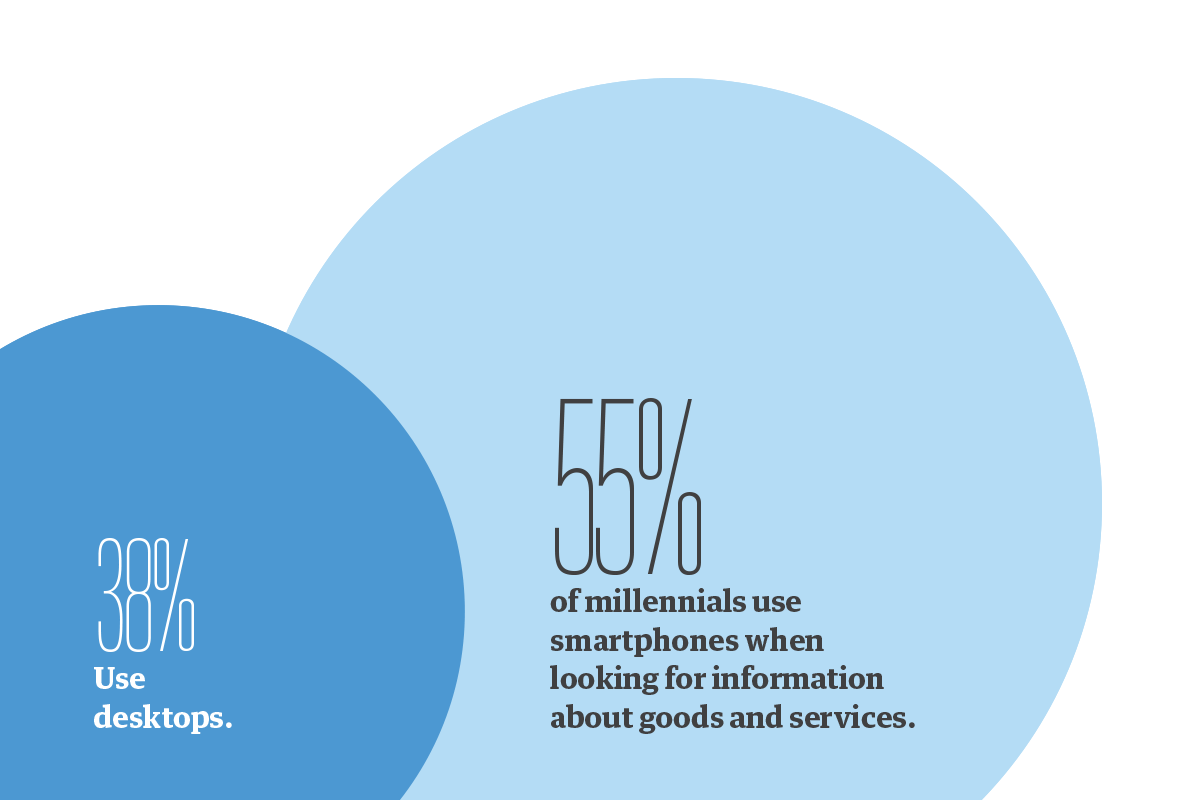
The future of retail
This year Future Report and Inizio investigate digital shopping habits among millennials in Sweden, France and Spain. Turns out webrooming has been a bit overestimated.
Traditional retail is going through rapid change. Online, offline, logistics and data are about to be integrated, fueled by tech like location data and augmented reality (AR). Jack Ma, former CEO of Alibaba, coined the term “New Retail” to describe this future of commerce. In this year’s edition of Future Report we explore the field in a survey among millennials in Sweden, Spain and France. We find that the mobile phone is the obvious way of shopping. About half prefer the mobile when they search for information about a service or a product.
55 percent of millennials in France, Sweden and Spain prefer to use smartphones when looking for information about goods and services.
Voice is a technology well-placed to develop. A quarter of millennials in Spain use it but only a few in Sweden. Sweden is lagging behind when it comes to launching devices, probably because the language is small. Many say they plan to buy a device, so the user base will grow. There is a considerable user base on mobiles too, another path to unlock voice commerce. Overall, how fast this field will develop should depend on how companies like Amazon and Alibaba, having their Echo and Genie hardware to draw upon, will choose to focus their business. Social commerce describes different online collaborative shopping tools in social media such as user ratings, recommendations or sponsored content by friends or influencers. The potential has been widely discussed and it is most widely spread in Spain, where 71 percent have bought something based on this, compared to 58 percent in France and 47 percent in Sweden.
Webrooming and showrooming have been debated a lot. Showrooming can be defined as a shopper visiting a store to check out a product but then purchasing the product online. Webrooming is when a shopper researches products online but buys it in a store. Our survey shows that webrooming seems to be a stronger trend, even though a lot of shopping is happening exclusively online among millennials. We are still surprised to see that shopping in stores is still going strong, not only for consumable products. Not every retail category is as likely to see a jump in changing behavior.
Here’s more insights from the survey: Insight story – full report
Trends in Brief

Trends in Brief
With new tech like augmented reality, virtual reality and voice, the big question is always; how do we monetize this? For visual search, it’s another story.
Visual search can boost your sales
With new tech like augmented reality, virtual reality and voice, the big question is always; how do we monetize this? For visual search, it’s another story. Before the tech even became a big phenomenon, e-commerce companies were already finding multiple ways to boost sales with it. Earlier this year, Amazon and Snapchat announced a partnership where users could take a photo of an item they liked in Snapchat and find it on Amazon right away. Ebay has similar tech and of course, Google is adding it as well. The latter has been using visual search for years to help people find similar looking pictures. In the coming years, the focus will be on increasing the tech’s accuracy and finding even more ways to guide users to purchases.
“Retail has always been a theater”
The experience economy is growing. The term refers to businesses incorporating experiential components into their offerings. One example is the Museum of Ice Cream in San Fransico. At the fake museum/pop-up store, visitors can pose in Instagram-friendly ice cream-themed installations after paying up to 38 USD per ticket. Critics call it a brain-dead funhouse, but the concept store is doing well. Over 1 million people have visited it so far. The Museum of Ice Cream has built a strong brand and is capitalizing on it through a nationwide merchandise partnership with Target. “Retail has always been a form of theater, of staging and storytelling, with products as cast members”, Target’s chief creative officer tells Bloomberg.
The (not so) sharing economy
Last year, the sharing economy was praised as the solution to all our sustainability anxiety. Well, that might not be true. Even though the ideas and visions are nice, the sharing economy is up against some pretty big roadblocks.First off, investors are more eager than consumers. Rewiring people to prefer sharing over owning will take some time. Secondly, the people who actually use the sharing services are not handling it that well. Consumers don’t return what they borrowed, treat it poorly, and ignore direction for usage. In San Francisco, electronic scooters you rent with an app became an over-night success. However, people immediately started putting them anywhere when they were done, creating a mayhem for other commuters, and soon they were banned.
Ellen Montén
World wide Amazon

World wide Amazon
By constantly playing the long game, Amazon stands to disrupt any business it enters. The question is what costs and consequences will come with it?
When asked what Amazon is, most people will likely answer that Amazon.com is an e-commerce destination. Some may point out that they also offer cloud services for developers. Others may note that they build consumer hardware such as Kindles and Echos. Fewer may say that Amazon is also a distribution player that builds advanced robotics systems for its own fulfillment centers and buys airplanes for fast overnight deliveries. With the purchase of Whole Foods, Amazon now owns a supermarket chain and is also an advertising player. In fact, it’s more or less impossible to describe it in a simple way, but one thing is for certain; Amazon is set to scale across the planet like no other company before – all in the name of the happy customer.
At its core Amazon is a company that leverages economies of scale and it does it perhaps better than ever done before. Economies of scale are achieved when an investment in operations can be leveraged to decrease the cost per unit of output with increasing scale. A classic example is the printed newspaper. Somewhat simplified – the cost of the very first newspaper printed in a printing plant is equal to the cost of the plant, while the cost of the billionth newspaper printed is equal to one billionth of the cost of the plant.
The bookstore scaled up
With the introduction of software, economies of scale became almost limitless; Microsoft developed Windows and then licensed it to computer manufacturers, Google indexed web sites that were built by the rest of the world to be searched and Facebook built the social infrastructure and let the users create the content to be consumed. What is unique about Amazon is that it excels at scaling in both the physical and the digital world. The origin story of Amazon is well known. It started as an online bookstore. The founder Jeff Bezos’ analysis was clear – retail will shift online, physical bookstores can only offer a limited selection of all books ever published, books are easy to ship and sourcing of single copies of books for delivery is simple. Building the online bookstore represented a significant initial investment, but thanks to economies of scale the cost per book shipped would decrease with every new book shipped.
Five percent of all US retail
Once at scale it was not a big investment to begin selling other categories of goods. As the store grew Amazon invested in fulfillment centers, large warehouses to store and package goods to be distributed. Goods need to be sent to and from these centers and Amazon is investing in its own distribution network of trucks and airplanes to reduce the costs of transportation. The fulfillment centers and the distribution network represent large investments, but by making it all available to third party retailers through Amazon’s online store they achieve scale faster.
Amazon has so far made most of its investments in their home market and now about 50 percent of all e-commerce in the US is happening through Amazon. Still, this only represents five percent of all US retail sales so there is still room for a great deal of growth as more and more retail shifts online. At the same time, Amazon is making significant investments in building fulfillment centers around the world. In fact, more than half of its current 750 distribution facilities are outside of the US, including 194 in Europe.
The online store operates on servers that run software. Both the store and the servers represent significant investments, but by making software available for others to use they again achieve scale benefits. This particular business is called Amazon Web Services (AWS) and has become highly profitable, representing about half of Amazon’s recent profit, with a margin above 25 percent. This is truly an indication of the potential of all of Amazon’s long term investments. In fact, having a long term outlook is a unique characteristic of Amazon. This, and relentless focus on the customer has allowed Amazon to grow its sales exponentially while reinvesting almost all of its net profits into scaling its businesses.
Even with almost no profit, the market has rewarded Amazon with a valuation of almost one trillion US dollars. This is because the market understands what Amazon is doing. Continued investments into scalable operations create a moat that potentially no other single company will be able to match. Alibaba and Flipkart with their respective dominance in China and India are in a position to achieve something similar, but otherwise only massive consolidation of retailers, e-commerce and distribution players can offer serious competition against Amazon. All of the investments aim to build horizontal businesses that benefit from network effects; in e-commerce, more buyers lead to more suppliers lead to more buyers. In cloud services, more tenants lead to great economies of scale, in terms of servers as well as software development.
“Continued investments create a moat that potentially no other single company is able to match.”
At the same time, Amazon is investing in vertical integrations. During the past two years the company has introduced more than 80 private labels to sell their own versions of products including clothing, shoes, jewelry, garden/outdoor, grocery, health/household and home/kitchen. And with Amazon Prime, a subscription bundle, built around the promise of always free two day delivery of most goods, customers loyalty is secured. The bundle now includes Prime video as well as an assortment of other digital services and its own brand for everyday commodity essentials, AmazonBasics, is only available to Prime members. At the beginning of 2018, Amazon had more than 100 million households globally signed up to the 119 USD per year service.
Alexa directs consumers
When a household signs up for Amazon Prime they generally make all future online purchases through Amazon. Once within the ecosystem, they are more likely to purchase an Echo compatible device (about 50 million shipped so far) that allows them to make purchases by directly talking to Amazon’s Alexa who will generally recommend Amazon’s own products or those labeled as Amazon’s Choice. Amazon is clearly moving the customer towards reducing the number of choices they make, especially choices that lead them away from the company. They now also sell door locks that can be remotely opened by their couriers letting them make deliveries directly inside the household. The next logical step in home automation is restocking of the refrigerator. Once deployed households can have their refrigerators replenished automatically by couriers that enter and exit the home while the members are at work and school. A kitchen full of goods without a single decision being made.
If more and more purchasing decisions are made by Alexa instead of the customer the advertising business will change fundamentally. And if the majority of the purchasing decisions are made on Amazon and you get 100 percent confirmation on how well your advertising performs as the purchases are also made on Amazon, why advertise anywhere else? Amazon’s advertising business is booming, in Q2 2018 it generated $2.19 billion, up 132 percent year over year.
Taking the long term perspective on this tremendous growth founded on the ambition of being the world’s most customer centric company, one can wonder where it all ends? A question that gets even more important when considering that Amazon, together with Facebook and Google, excels at not paying taxes. No doubt the company builds its value on top of the collective global infrastructure which to a vast extent is financed and made possible by governments across the planet, yet avoids sharing in any of the costs. Marketing guru and tough critic of the same companies Scott Galloway wrote in late 2017: “The most disturbing stat in business? Since 2008 Walmart has paid $64B in corporate income tax, while Amazon has paid $1.4B. This is despite the fact that, in the last 24 months, Amazon has added the value of Walmart to its market cap. The most uncomfortable question in business, in my view, is how do we pay our soldiers, firefighters, and teachers if a firm can ascend to $460B in value (#5 in the world) without paying any meaningful corporate taxes.”
An exponential scale
By consistently playing the long game, Amazon stands to disrupt any industry it enters while making more and more businesses dependent on its own infrastructure. Currently, less than 1 percent of global retail is happening through Amazon, so the growth potential is almost limitless. But what happens when that one percent becomes ten and beyond as the juggernaut continues to scale exponentially? A great deal of responsibility now lies on the shoulders of regulators in the EU and the US who quickly need to understand if and how to regulate a company whose genuine primary objective is to meet the demands of the customer – at any cost. This will challenge the current interpretations of anticompetitive laws. Some legal scholars, such as Lina Khan, suggest that the US needs to again strengthen its once robust monopoly laws in order to break up Amazon. The one trillion dollar question that now needs to be answered is: what costs and consequences are we as societies willing to accept as Amazon disrupts its way across our planet all in the name of the happy customer?
Meet our people
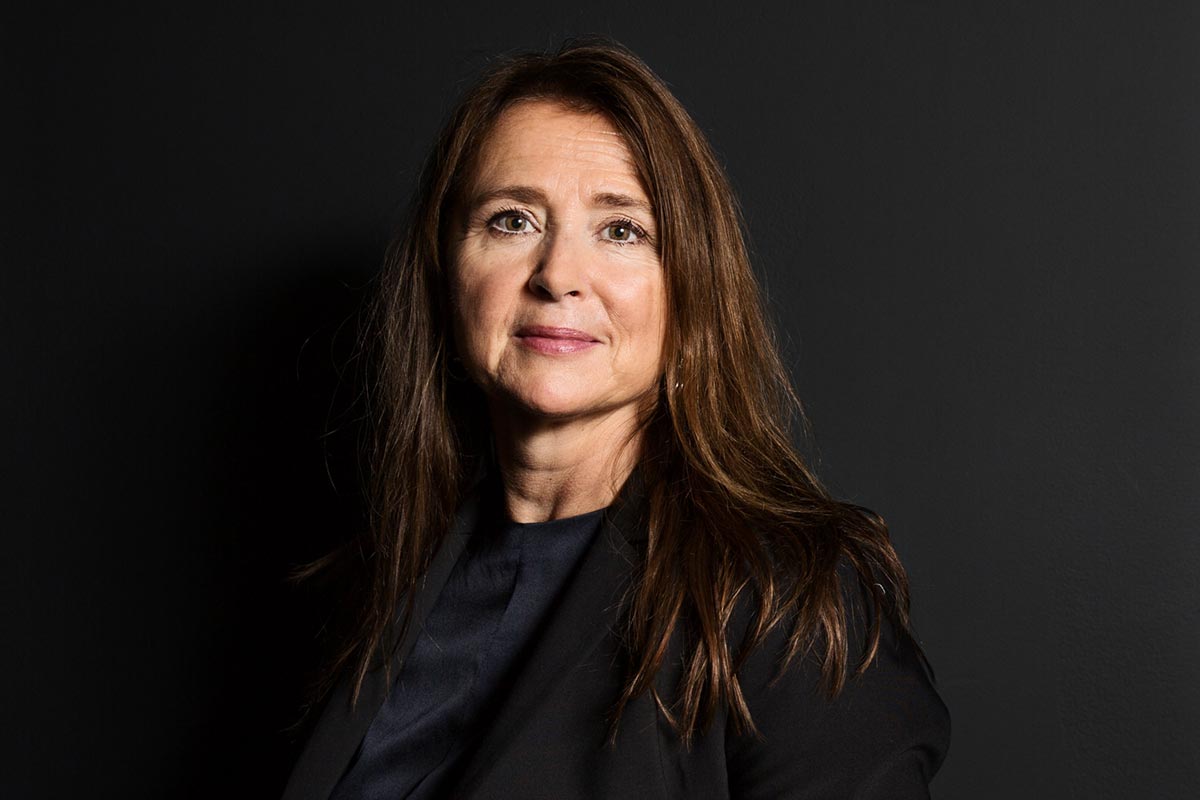
Meet our people
Cathrine Laksfoss has turned Schibsted Distribution into a business with future potential. Meet her, Michel Dahlberg Traore from Lendo and Yassir el Ismaili el Idrissi, CEO of Schibsted Classified Media Tunisia.
“Strategy and business development are my work passions.”
A dying industry or a future potential. Cathrine Laksfoss has turned Schibsted Distribution around. The network which for many years only delivered newspapers has proven to be a business with future potential. “I am very proud that our team has turned a traditional cost center into a profitable company in only three years”, says Cathrine. In times when print revenue is decreasing, Cathrine’s job is to keep print distribution costs low and develop initiatives and startups that utilize the network to generate new businesses. The options were there from start – Schibsted Distribution, in cooperation with Amedia and Polaris, reaches 90 percent of Norwegian households and 8,000 retailers every day. “Exciting things are happening in distribution and Schibsted has unique opportunities in building a position in the intersection between distribution and marketplaces”.
The new business has two core parts. There’s online shopping with e-commerce parcels, business-to-business deliveries in the morning and a service where consumers can send parcels to one another. Then there is “morgenlevering” (morning delivery) – from which you can order breakfast to your door. And Cathrine knows the business well. Being a logistic executive with 20 years of management experience as CEO, CFO and business developer, she has spent the last five years in Schibsted.

Years in Schibsted: 5. I look forward to: The skiing season and launching our next concept.
“Schibsted’s strength is its spirit”
Lendo has become a true success story for Schibsted. The online service helps people compare interest rates on personal loans through a smooth and secure process. Michel Dahlberg Traore is now working on launching the business in new markets, currently focusing on Denmark. “This means that I’m taking care of everything, more or less. I need to understand the Danish financial system, find and sign business partners, lead product development, set up marketing plans – you name it…” Michel started on the Schibsted trainee program, where he got to work with product development at Leboncoin in Paris and on strategy in Oslo. In Stockholm he joined Aftonbladet and Schibsted Growth. “Schibsted’s strength is the entrepreneurial spirit, where companies like Lendo are run like startups. Even though we are rather large, we’re still hungry.”

Years in Schibsted: 3,5. I look forward to: Painting Europe green (with Lendo’s logo)!
Took the lead in three years
In Tunisia the marketplace Tayara has two new verticals on the way and is planning to integrate payment and delivery into the platform. So CEO Yassir El Ismaili El Drissi is a bit busy. Tayara was launched in 2013 and in less than three years it became the destination of choice for cars and real estate. Yassir joined the company in 2016 and soon decided to move the site onto the new Schibsted Rocket platform. This was a starting point for developing the business even more. “Now we have a plan to become the match maker for Tunisian people by 2020”, says Yassir. The new verticals are ImmoExpert.tn, for real estate builders and Talents.tn, a white collar job board. Hopefully the success from 2017 when Tayara was named the best site, will continue. “You know, in Tunisian Arabic, Tayara means fantastic”

Years in Schibsted: 2. I look forward to: A world led with a startup mindset.
“‘Why’ is the most important question”
As truth is under attack, Aftenposten is working systematically with explanatory journalism. “It started at the foreign desk, where it’s a very useful way of taking the next step in a story”, Hanne Waaler Lier, foreign news editor explains. Hanne is now taking the idea out to other departments at the newspaper, trying to increase the amount of stories which not only describe what’s happening, but also help the readers understand complex events. “It’s effecting our reporting in many ways. It is basic journalism, but it is easy to forget that ‘why’ always is the most important question.” The true driver behind the project is that it meets the needs of Aftenposten’s users. “We know that Aftenposten’s readers demand this type of journalism from us. And these articles get many readers”.

Years in Schibsted: 18. I look forward to: Winter. Always.
We'll fight for what we believe in

We’ll fight for what we believe in
Simplicity and coherence – these are two pillars that have been the winning concept for digital leaders of today.
The world’s most successful digital companies have quickly managed to take over the world through a clear and consistent design and personality, across borders and between target groups. Google, Instagram and Facebook are platforms where you get a coherent and simple experience in all touch points. The thresholds are few and they have quickly managed to build extremely strong brands and successful global businesses. But is simplicity and coherence enough as a winning concept for brands in the future? And where does Schibsted stand in this?
Our strategy is to build companies and brands in close harmony with the local cultures and societies where we operate. Being close to our users and empowering people in their daily lives has over time made our brands a part of the fiber in the local communities. With close local relationships comes loyalty – but loyalty is not something lasting; it is something you earn.
We believe our legacy is the answer. Schibsted has a strong culture where humanistic values such as diversity, integrity, equality and empowerment characterize everything we do and have done for 178 years.
From Christian Schibsted starting the Norwegian newspaper Aftenposten in 1860 till today when marketplaces like Leboncoin, Subito and Jófogás offer smart and environmentally friendly consumerism through secondhand trade.
Coherence and simplicity
Together with our 200 million monthly users the Schibsted family can be a progressive force and make a positive change in the communities where we operate. Having a strong value set and a purpose that goes beyond quarterly result, is something we believe is becoming increasingly important in a turbulent world, where forces are questioning simple humanistic beliefs. Schibsted has gathered common resources to leverage local impact, such as a data platform, login functions, employer offering and sales. Now it’s time for us to also capture the opportunity and take agency as the unifying force behind our local heroes.
Together with our local brands, Schibsted will step up on the arena and fight for what we believe in. We will also create a coherent and simple experience through a new design system and clarify why our family of brands is connected and how we protect your data.
Because we believe that coherence and simplicity together with strong values are the keys to success.
A paper of war heroes

A paper of war heroes
Few readers of Verdens Gang are proud to admit their loyalty. But VG knows how to take on a challenge and turn it into a success.
Perhaps it’s true that VG is not loved. Most people in any case are reluctant to declare their love. Some of them hate the newspaper, some fear it, but most read it. And no one, absolutely no one, is indifferent to it. VG is the newspaper that united Norway. No other newspaper has bound the country together in the same way. Big words – but at VG, we talk and write with capital letters. Therefore: without VG, the distance between the power and the people would be greater.
Summer of 1945. Some of the journalists still wore their military uniforms when they began working at the new newspaper at Akersgata 34. In the weeks before, the printers had gone all over Oslo reassembling parts that the Germans had removed from Tidens Tegn’s rotary press during the war. On June 23, the first edition of Verdens Gang hit the street. The front page headline was “What the occupation cost us”. The article was illustrated with a picture of the hated green cheques that the German occupation authorities had used to empty the Central bank. Despite warnings the editors insisted on placing a thick red line across the illustration, creating a sort of “stop” sign. This graphic device caused major problems for the printer. But the newspaper came out – with the red slash across the front page.
“While others sat on the fence, VG jumped off”
Already, VG employees were displaying an attitude that would come to typify the newspaper and make it a success. At VG we don’t take “no” for an answer. Constraints are there to overcome. Pushing the limits of the possible – and the imaginable – is in the organisation’s DNA. This attitude has produced results in the form of journalism, ethics, profitability and, in recent years, technology.
The Newspaper of war heroes
VG is the newspaper of war heroes. It was Norway’s resistance forces, the boys in the woods, who founded VG after the country’s liberation, in 1945. Decades later it would become the most popular paper in the country. The founders wanted to publish a newspaper built upon the ideals they had fought for during the long years of war: freedom and independence. VG would be independent of political parties and financial interests. It was to be a paper of the people, embodying Norway’s national feeling. But first and foremost, VG became a newspaper with faith in the future.
What the World War II resistance fighters hoped for was “a new breed of newspaper”. Just what they meant by those words is hard to say, but one possible interpretation is that they wanted a newspaper that not only represented something new at the time but that would keep changing with the country and the people. That’s what it became, anyway. Today’s employees, like those before them, have met challenges with curiosity and fighting spirit, embraced change and encouraged creativity and innovation to flourish.
VG has kept the promise of “the boys in the woods” and created “a new breed of newspaper”. Without this attribute, the newspaper most likely would not exist today. What has defined VG most is the ability to take actions that fundamentally change the status quo. VG has not always been the first to notice paradigm shifts, but it has almost always been the first to act. While others sat on the fence, VG jumped off.
The first and most significant decision in VG’s history was no doubt the commitment to independence made in 1945. Unlike many newspapers, VG had no party affiliation. It did not survive on the alms of the state or of special interest organisations. It was free in the truest sense of the word. VG belonged to no one – but its readers. VG’s independent course was crucial to its ability, decades later, to become “the paper of the people”. It fought for no single cause or ideology. The editors struck out in all directions, but first and foremost upwards – against power, on behalf of the Norwegian people.
Creativity let loose
VG’s biggest and most important transformation came in 1963. It was a turning point, and VG’s journalism thrived in the new format. Lunacy and gravitas went hand in hand, from cover to cover. The layout was bolder than that of the competition. The editors gave free rein to creativity. The headlines became more brazen, the language more precise, the story angles tougher. The tabloids were looked down on. They were light on their feet and keener to entertain than to set the agenda, it was said. VG couldn’t care less.
After Schibsted rescued the newspaper in 1966, circulation grew year by year. In 1981 VG became the country’s largest newspaper. Certainly, the most important year for VG – at least for its own future – was 1995. That’s when VG Nett was launched. While many newspapers believed that news would be distributed on cellulose for generations to come, the people running VG understood that a new age had begun. They bet on it, even though it hurt. That gave VG a head start into the digital era.
The same tabloid approach that had made the print newspaper skyrocket turned VG Nett into the country’s largest website. Its spicy mix of hard news, sports, entertainment, politicians and celebrities wrinkled the noses of the intellectual elite. But what did that really accomplish? To be important you need to have a broad impact. VG’s persona is down-to-earth and direct. The key to success is understanding social currents and lifting the problems of ordinary folks onto the politicians’ table.
For most VG readers, the print edition was their number two newspaper. First they devoured Aftenposten, Adresseavisen or their local newspaper, and then – for a different view of the world and the news – they went to the kiosk and bought VG. Norway’s largest newspaper was a supplement. In the digital age, VG is number one. For more than two million Norwegians the day begins and ends with VG. Every day almost half the Norwegian population check in to read exposés, get the latest news or be entertained. So it’s not on paper but online that VG has united Norway into one kingdom.
VG is now facing a new revolution. Print newspapers will soon be history. Desktop reading is falling, and the mobile phone is taking over. Text is no longer the preferred language. Vibrant images and sound are. And the changes are happening faster than before. Artificial intelligence could fundamentally alter the craft we now call journalism.
Never again, they said
VG’s history shows that it is capable of adapting to this change, too. Yes, it will be a challenge, but it’s possible. When the boys in the woods founded the newspaper, they did so in the ruins of a political wave that took millions of lives. Never again, they said. VG was supposed to “build bridges over antagonisms in society”. At its best, this newspaper does just that.
Compared with other countries, Norway has few antagonisms. There is little to separate the politicians in parliament from the people who voted them in. We have no nobility or cultural elite floating high above the rest of us. People converse and understand each other rather well. We trust each other, speak the same language and have the same frames of reference. An important reason is that we have a public realm that’s common to all. All Norwegians – or almost all of them – read the same newspaper.
An award-winning newspaper
1. In 2017 VG received several awards for its journalism. It was appointed the two most prestigious national awards at the yearly Norwegian Media Prize-gala – the digital site of the year and the paper of the year.
2. A story exposing illegal use of forced belt within the mental health care system was the winner at the yearly conference for investigative journalism, Skup.
3. The Lawyer and the Torpedo won the Scoop category at Schibsted Journalism Award and was appointed best digital story at the Media Prize event. It revealed the shocking story of a lawyer ordering a murder to protect his client.
Investment trends

Investment trends
Schibsted Growth keeps track of – and invests in – startups. These are three trends they’re interested in right now.
Banks will be losing power
New regulations and technology are enabling fintechs to deliver banking services without being banks themselves. Consumers can pay, lend and borrow directly from each other, and investors can target assets directly without the need for a banking middle man. Light-footed startups are assailing the profitable legacy institutions, who are fighting back for the consumer trust. The race is on!
AI taking over digital Health
Medical care is in greater need than ever for democratization and automation to handle the growing overload within the sector. What’s been the talk of the town is now becoming reality – managed marketplaces with advanced algorithms and machine learning have entered the market. The key to success is giving power to the customers and providing new working tools for professionals.
Marketplaces are getting smarter
Software has a unique way of empowering people. Besides giving access to a wealth of information, software can also empower consumers in their daily lives. Tomorrow’s digital marketplaces will be much more powerful, reinforced by even more advanced software, and they will be the foundation of whole industries. The driving forces behind the opportunities are the ubiquity of mobile devices and using data and algorithms to match the perfect buyer with the perfect seller at the perfect time.
About Schibsted Growth
Schibsted Growth looks for entrepreneurs in Internet consumer services, fintech, marketplaces, and ecommerce. Three of our latest investments were: Hypoteket, AHUM and YEPSTR. Do you have an investment opportunity for us? Tell us about it by emailing .
